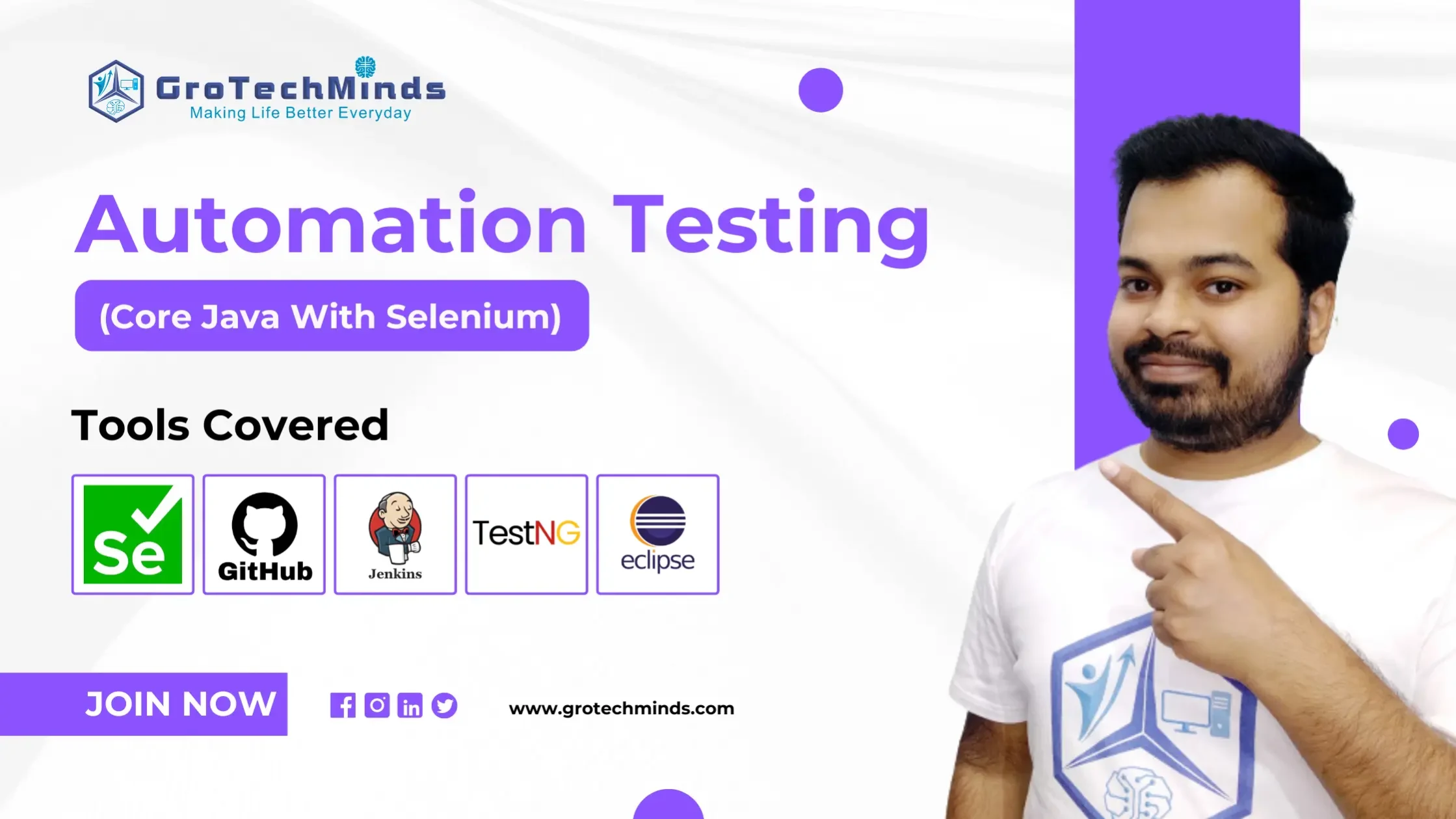

Automation testing Introduction
In the world of software, there are two types of testing: manual and automated. Some manual testing methods, such as discovery testing and usability testing, are quite helpful. Other types of testing, like regression testing and functional testing, can be done manually, but it’s a rather inefficient practice for humans to repeat doing the same thing again and over. These types of repetitive tests are ideal for test automation.
Automation Criteria
To be automated, a test must match certain conditions; otherwise, it may wind up costing more than it saves. After all, saving time, effort, and money is a fundamental purpose of automation. Here are some general test automation criteria. Remember, these are just starting points. Depending on your circumstances, your criteria may differ.
The examination must be reproducible. It makes no sense to automate a test that will only be run once. A repeatable test consists of three steps:
- Configure the test, including the data and environment.
- Run the function and record the results.
- Clear the data and the environment.
We want to be able to bring the environment into a consistent state in the first phase. In other words, if we have a test that attempts to add an existing user, we must first ensure that the user exists before running the test. When the test is finished, the environment should be reset to its original condition.
- Determinant
When a function is determinant, the result is the same each time it is performed with the same input. The same may be said for tests that can be automated.
Software, on the other hand, may use a large number of variable inputs, making it challenging to provide consistent results over time. Some variables may even be random, making determining the particular outcome impossible. This can be compensated for in software design by accepting test inputs via a test harness.
Other programme functionalities may be additive; for example, adding a new user would increase the number of users. At the very least, when we add a user, we know that the total number of users will increase by one. However, performing tests concurrently may result in surprising results. Isolation can help to avoid false positives.
- Unopinionated
Opinion concerns cannot be automated. This is where usability testing, beta testing, and other similar methods shine. User feedback is valuable, but it just cannot be automated.
Automated Test Types
There are so many different sorts of tests, many of which can be automated, that we couldn’t possibly cover them all in one post. But these are sufficient to get you started.
There are numerous types of code analysis tools available, including static and dynamic analysis. Some of these tests examine security issues, while others examine style and form. When a developer checks in code, these tests are executed. There isn’t much test authoring to be done with these automated tests other from configuring rules and keeping the tools up to date.
A unit test suite can also be automated. Unit tests are intended to isolate a particular function or unit of action. They are often executed on a build server. These tests do not rely on databases, third-party APIs, or file storage. They must be fast and are intended to test only the code, not the external dependencies.
When it comes to automation, integration tests are a different breed. Integration tests, often known as end-to-end tests, are more difficult to put up since they must interface with other dependencies. When dealing with resources beyond your control, it’s often best to construct false external resources.
If you have a logistics app that relies on a vendor’s web service, your test may fail unexpectedly if the vendor’s service is unavailable. Is this a sign that your app is broken? It could, but you need have enough control over the entire test environment to specifically design each case. Never let an outside influence determine the outcome of your test scenario.
Acceptance Tests That Are Automated
There are numerous practises that use automated acceptance tests (AAT) today, but they all essentially achieve the same thing. The terms behavior-driven development (BDD) and automated acceptance test-driven development (AATDD) are interchangeable. They both do the same thing: they create the acceptance test before developing the feature.
Finally, the automated acceptance test is run to check if the feature delivers on what was agreed upon. As a result, it is vital that developers, business, and QA collaborate to write these tests. They will be used as regression tests in the future to ensure that the functionality performs as planned.
Without AATs, you must write regression tests after the fact. While all are types of functional tests, the way they are created, when they are written, and who writes them are vastly different. They, like AATs, can be driven by code or a UI via an API. These tests can be written using a graphical user interface (GUI).
There are many different types of performance tests, but they all assess some aspect of an application’s performance. Will it withstand extreme pressure? Is the system being tested for high heat? Is it just response time under load that we’re after? What about expandability?
Sometimes these tests necessitate simulating a large number of users. In this scenario, having an atmosphere capable of achieving such a feat is critical. Cloud resources are available to assist with this type of testing, although on-premises resources can also be used.
What exactly is a smoke test? It’s a simple test that’s frequently run following a deployment or maintenance timeframe. A smoke test is used to check that all services and dependencies are operational. A smoke test is not intended to be a full-fledged functional test. It can be executed as part of an automated deployment or as a manual step.
Process of General Test Automation
Now that we’ve seen enough sorts of automated tests and criteria for automation to get a sense of things, here’s the basic method of test automation. The three key steps in testing automation are to plan, act, and report outcomes.
First, we must prepare the state, the test data, and the testing environment. As we’ve seen, most tests require the environment to be in a specific condition before performing an action. In most cases, some preparation is required. Either the data must be modified or the programme must be placed in a specified state, or both!
When the state and/or environment have reached the preset state, it is time to act! The test driver will execute the test by either calling an application’s API or user interface or by directly running the code. The test driver is in charge of “driving” the tests, while the test management system is in charge of coordinating everything, including results reporting.
Results will be recorded and reported using a test automation system. These outcomes may take a variety of forms and may even generate problem reports or bugs in a task tracking system. However, the end result is either a pass or a fail. Each test scenario often has a green or red signal to signify pass or fail.
Sometimes tests are inconclusive or fail for unknown reasons. When this occurs, the automation system keeps a complete log of the output for developers to evaluate. This log assists them in locating the problem. They should be able to recreate the scenario once they’ve found a solution.
Conclusion
The final line is that test automation improves quality while increasing speed. However, not all tests can be automated. There will undoubtedly be an investment. With so many different sorts of testing available, it’s critical to find the correct mix. The test pyramid is a simple guideline to help you get this properly. It specifies that the majority of tests should be unit tests, followed by service tests, and finally UI testing.
A test automation system handles all aspects of testing, such as managing test data, conducting tests, and tracking outcomes. For teams that are being overwhelmed by the strain of repeating the same manual tests that should be automated, test automation is the next step.
GroTechMinds is a well-known academy for learning automation testing, and we focus on technical-based learning for the automation testing course. If you are looking to land a super career in the automation testing field, then GroTechMinds is the perfect door for you.
If you have any concerns about your automation testing career, don’t worry. Check out our online automation testing course, talk with our experts, and start your automation testing journey.
Consult Us


















